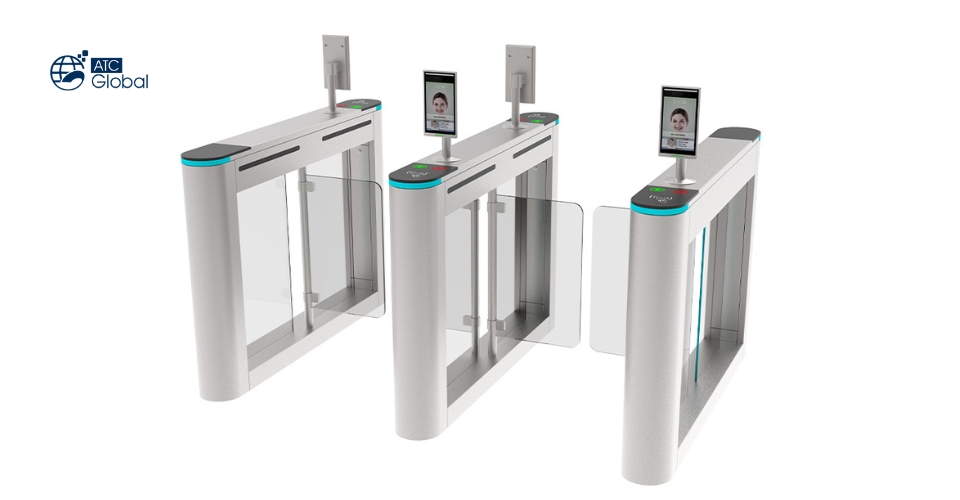Why Use a Biometric Turnstile in 2024? Enhancing Security and Efficiency Leave a comment
Introduction:
In an increasingly digital and security-conscious world, traditional access control systems are being replaced by advanced technologies. Biometric turnstiles have emerged as a popular choice for organizations seeking enhanced security and efficiency. In this article, we will explore the benefits of using a biometric turnstile in 2024 and why it is a smart investment for businesses.
Biometric turnstiles are access control systems that use individual physical or behavioral characteristics, such as fingerprints, facial recognition, or iris scans, for identification. They offer several advantages over traditional access control methods, making them a preferred choice for businesses in 2024.
What is Biometric Turnstile?
A biometric turnstile is a pedestrian turnstile barrier that detects users based on their biometric information. Biometric turnstiles are classified into four varieties based on their recognition information: face recognition turnstiles, fingerprint turnstiles, finger vein recognition turnstiles, and person certificate integration recognition turnstile gates.
As a result, the pedestrian turnstile gate employs a variety of identification techniques, performs a variety of duties, and fulfills the needs of a variety of users.
To put it more precisely, the biometric turnstile is built upon the conventional intelligent turnstile gate and incorporates a range of biotechnology, including face, fingerprint, palm vein, and iris recognition, to provide diversified identification options and satisfy various event requirements.
You can use the self-service biometric turnstile gate by presenting your ID and boarding pass, for instance, if the biometric turnstile is utilized for airport security inspections. Compared with the traditional boarding process, the biometric turnstile can considerably cut the waiting time.
Enhanced Security:
Biometric turnstiles provide a higher level of security compared to traditional access control systems. By using unique biometric data, such as fingerprints or facial features, they ensure that only authorized personnel can access restricted areas.
This eliminates the risk of unauthorized entry using stolen access cards or passwords. Biometric turnstiles also offer real-time monitoring and integration with other security systems, such as CCTV cameras and alarms, allowing for quick response to any suspicious activity or breaches.
Improved Efficiency:
Biometric turnstiles offer quick and seamless access, eliminating the need for physical keys, access cards, or PIN codes. This saves time and reduces congestion at entry points. They also eliminate the possibility of human error in verifying identities, ensuring accurate and reliable access control.
Biometric turnstiles can be integrated with visitor management systems, streamlining the registration and tracking of visitors, contractors, and employees. Additionally, they can be used to track employee attendance, providing accurate data for payroll and attendance management.
Hygiene and Health Safety:
In the wake of the COVID-19 pandemic, hygiene and health safety have become paramount. Biometric turnstiles offer contactless authentication, reducing the risk of germ transmission, especially in high-traffic areas.
They can also be integrated with health screening systems, such as temperature scanners or facial mask detection, ensuring compliance with health and safety protocols.
Cost-effectiveness:
While the initial investment in biometric turnstiles may be higher than traditional systems, they offer long-term cost savings. They automate access control processes, reducing the need for manual verification and administration. Biometric turnstiles also eliminate the need for physical access cards, which can be lost or stolen, requiring frequent replacements.
Compliance with Data Protection Regulations:
Biometric turnstiles securely store and encrypt biometric data, ensuring compliance with data protection regulations. They also provide individuals with control over their personal data, enhancing privacy and transparency.
Integration and Scalability:
Biometric turnstiles can be seamlessly integrated with existing access control systems, making it easier for organizations to transition to this advanced technology. They can also be easily scaled to accommodate the needs of growing organizations, making them a flexible solution for future expansion.
Industry Applications:
Biometric turnstiles find applications in various industries, including corporate offices, government institutions, healthcare facilities, educational institutions, and transportation hubs.
Conclusion:
In 2024, the use of biometric turnstiles offers numerous advantages for organizations seeking enhanced security, improved efficiency, and compliance with data protection regulations. With their advanced identification capabilities, streamlined access control processes, and integration possibilities, biometric turnstiles are a smart investment for businesses across various industries. Embracing this technology ensures a secure and efficient environment while keeping up with the evolving demands of the digital age.

